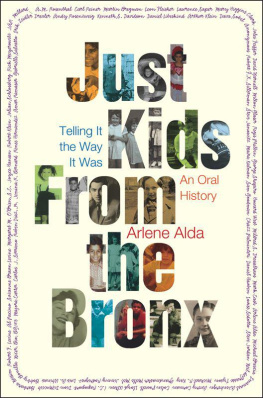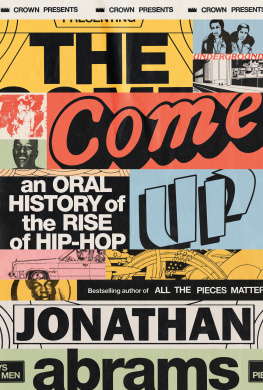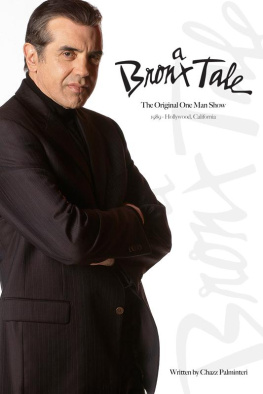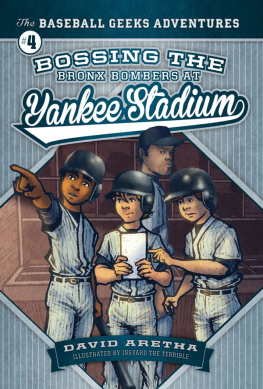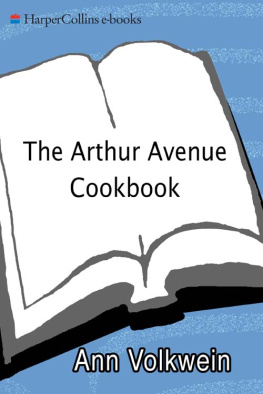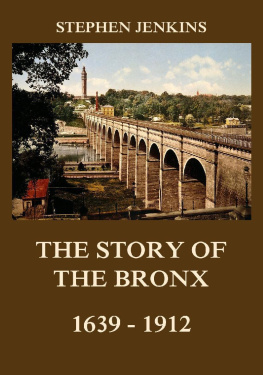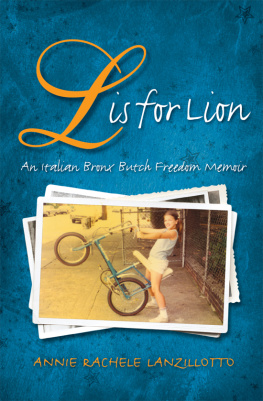
Thank you for buying this
Henry Holt ebook.
To receive special offers, bonus content,
and info on new releases and other great reads,
sign up for our newsletters.

Or visit us online at
us.macmillan.com/newslettersignup
For email updates on the author, click here.
The author and publisher have provided this e-book to you for your personal use only. You may not make this e-book publicly available in any way. Copyright infringement is against the law. If you believe the copy of this e-book you are reading infringes on the authors copyright, please notify the publisher at: us.macmillanusa.com/piracy.
To the young writers and scientists and artists and musicians and actors and educators and doctors and lawyers and nurses and sports figures and business people and politicians who are the future of the Bronx
and to the memory of my parents who had the good sense to move to the Bronx in the first place.
Stories have to be told or they die, and when they die, we cant remember who we are or why were here.
Sue Monk Kidd, The Secret Life of Bees
A few summers ago, my husband, Alan, and I were at a friends house on Long Island, having predinner snacks and drinks, when I heard the words in the Bronx, said by Millard (Mickey) Drexler, whom Id met for the first time minutes before.
Are you from the Bronx? I asked.
Im from the Northeast. Barnes and Arnow Avenues, Mickey answered.
Youre kidding. Which building?
The Mayflower, he said.
Thats unbelievable! Thats my building.
We tried to figure out why we hadnt met when we were kids. The Mayflower has ninety-six apartments. Thats a lot of people, but the age difference (Im eleven years older) was probably the biggest factor. When I was in high school Mickey was a toddler. That age gap disappeared completely when we talked nonstop like long-lost friends at dinnertime, deciding that it would be fun to go back to the Mayflower together.
So a few months later we went, new buddies revisiting our old building. Alan, Mickeys cousin, and a few of Mickeys longtime friends from the neighborhood came with us. It had been well over fifty years since either Mickey or I had lived in the Mayflower and thirty years since I had last visited. Would Mickey be able to see his old apartment? (No. No one answered the doorbell when he rang.) What did the Mayflower look like now, seen with our grown-up sensibilities? (On the outside, the same as ever. A six-story, tan and brown brick building, taking up half a city block.)
Mickey, chairman and CEO of J.Crew, led the way inside, the rest of us following. The lobby looked starka big contrast to my upscale Manhattan apartment building, with its lobby furniture, area rugs, and walls hung with art. The simple Mayflower interior served as a pointed reminder of the unexpected turns my life had taken. Still, I felt totally at home seeing the familiar, worn terrazzo stairways and floor of the old building, which triggered vivid childhood memories. Energetic girl on a rainy day, running and jumping in the hallways. Bouncing a ball. Noises echoing. Typical working-class Bronx Jewish first-generation kid. Me. I clearly saw and heard myself as that ten-year-old girl again, tossing my beloved Spaldeen ball.
Mickey and I began comparing notes about our families and our oh-too-small apartments. I was fascinated by his storiesof his aunt Frances and how she became his renegade role model; of how, when he attended the Bronx High School of Science, he first started getting knowledge of lives different from his own. Lives where some kids even had their own bedrooms and where the family expectation was that the children, without a doubt, would go to college. Standing with Mickey, a picture of confidence and success, in our shopworn surroundings, both of us excited about comparing stories about our pasts, started me wondering about other interesting and accomplished people from the Bronx. What were their stories? What were their childhoods like? Who influenced them? How did they find a place for themselves in the larger world, the one beyond their own Bronx neighborhoods?
The idea for Just Kids from the Bronx was beginning to hatch.
I started out cautiously by interviewing only friends. Mickey was among the first kids I talked with. Two longtime pals of mine, the producers Martin Bregman and David Yarnell, were also delighted to be included in my project. Regis Philbin, both a friend and a wonderful storyteller who lives down the hall from me in our Manhattan building, eagerly said, Ill be happy to talk to you. I had a great childhood in the Bronx. The enthusiasm they all showed for the project, along with the comic adventures described in those initial interviews, launched this book. Friends then recommended friends, and acquaintances mentioned names they had recognized but didnt know personallyDid you talk to So-and so? I knew my growing helter-skelter list of names excluded many who were worthy and interesting, which meant this book was not to be a comprehensive history of all the great people of the Bronx. But happily, this informally gathered group hinted at the actual changing demographic of the borough over the years, which went from being predominantly Jewish, Italian, and Irish in the earlier part of the twentieth century to the current majority populations of African Americans and Hispanics, all of them sharing some pride in the borough that helped raise them. When I talked with Joel Arthur Rosenthal (JAR), the only living jewelry designer to have a retrospective of his work at New Yorks Metropolitan Museum of Art, he said, Im glad that youre doing a book about the Bronx. Im sick and tired of hearing about Brooklyn.
* * *
I EDITED THE conversational interviews, taking care to preserve each persons own wording. I arranged the material chronologically, so the differences and similarities in each persons life, along with the changes in the Bronx itself, would be more apparent. As the volume of candid, personal stories grew, I found I was deeply touched and gratified by the trust these wonderful Bronxites had in me, basically a stranger to most of them.
I became riveted as the three graffiti artists of Tats Cru told of their exploits in the 1970s and 80s, and what it meant to them to have people see their art on the outside of the number 6 train, rolling from the Bronx all the way through Manhattan, into Brooklyn, and then back again to the Bronx. I was transported by Al Pacinos lyric description of the sounds of the world on his roof in the 1940s: And at nightat night, there was this cacophony of voices, especially in the late spring to late summer. You would hear the different accents. We had them all. There were Italians, Jews, Irish, Polish, German. It was like a Eugene ONeill play.
I laughed, with total surprise, when David Yarnell told me about his risky exploits in the 40s, secretly growing marijuana in Bronx Park. Teenagers did things like that then? And then there was the eight-year-old Ken Davidson, in the 50s, playing with his young band of buddies in the rocky, empty lot next to their apartment house, setting firesliterally playing with fire, despite his mothers warning, You could burn your eyes out.
I was moved and informed by Neil deGrasse Tysons descriptions of his experiences with racism when he was an innocent and unsuspecting preteen. Similarly, I was appalled by the not so subtle racism that Joyce Hansen encountered in high school when her college guidance counselor said college was for smart kids and therefore not for her.
Next page
